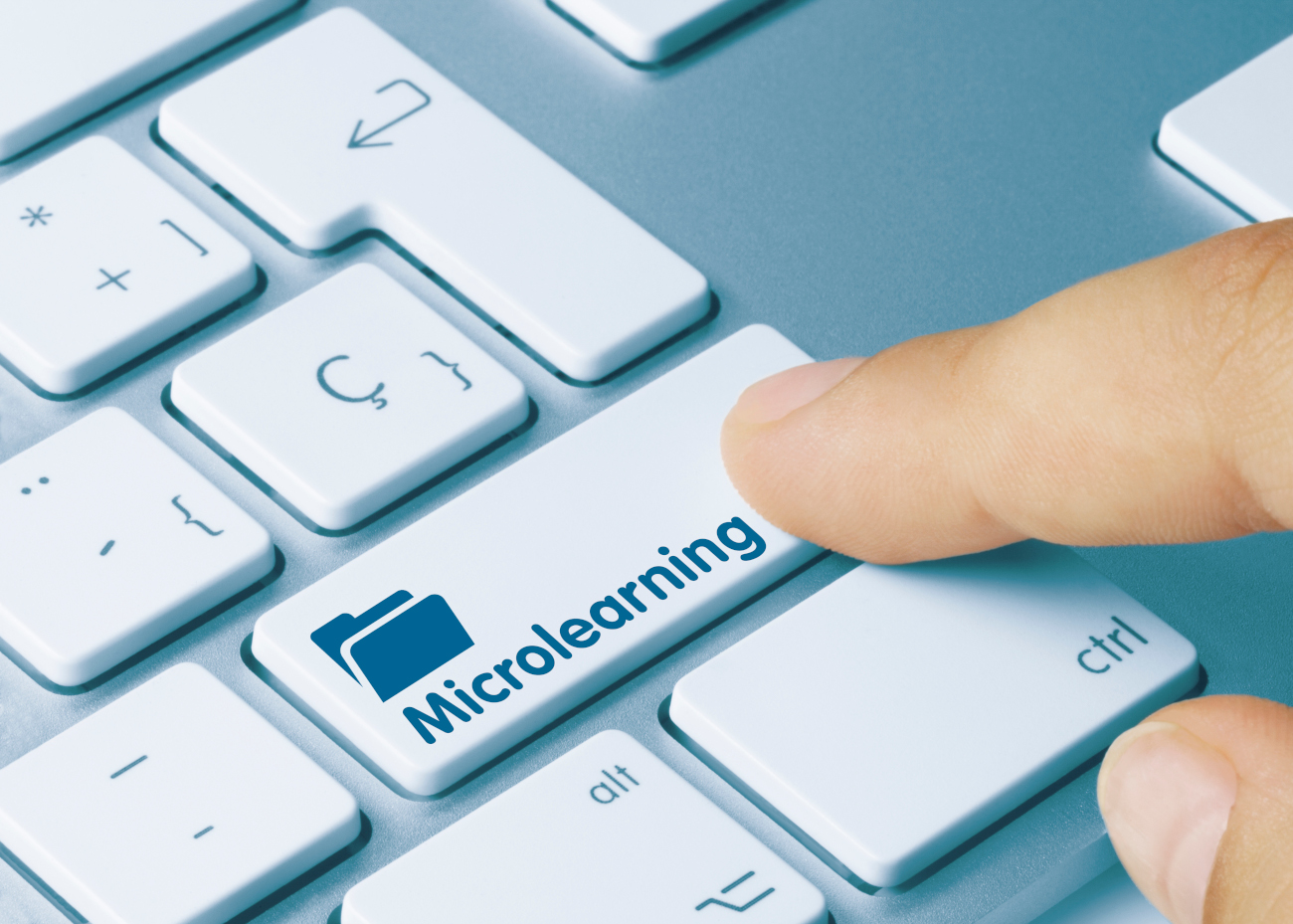Microlearning is a common term used in business training and education. It refers to a form of learning that delivers information in small segments. Rather than going through a whole chapter or in-depth lecture, learners are given bite-sized pieces of content that contain to what they must know. It boils everything down to allow for fast absorption of information.
Many companies have discovered that microlearning can reduce their training costs and get new hires up and running sooner. The average micro-lesson takes approximately 10 minutes or less to complete, with courses usually including around four lessons.
A full course usually covers around four or five topics while microlearning sticks to one or two training goals.
Shorter sessions make it much easier to fit training into a busy day. Employees won’t have to devote hours to sit in on classes. Instead, they can complete a micro-lesson between tasks or during downtime.
Microlearning also excels when it comes to knowledge retention. The average traditional learning course has a 15% knowledge retention rate while microlearning falls between 70% and 90%.
This method also increases learner engagement to around 90%. That’s a huge leap from the industry average of 15%.
A Rapid Learning Institute survey found that 65% of respondents felt that the standard eLearning module gave them too much information. Meanwhile, 58% of respondents from a Software Advice survey said that they would be more likely to use company eLeaning tools if they were divided into shorter lessons.
Microlearning is beneficial to everyone. Learners get more value out of the experience, business cut training costs, and trainers more efficiently utilize their time.
If you don’t have microlearning in your training program now, you won’t have to look far to get it. There are ways to leverage existing content by turning it into micro-lessons.
Use an LMS That Supports Microlearning
The easiest way to turn your content into microlearning is to start with an LMS that supports it. Many platforms allow users to build microlearning courses. They give you access to your existing content that can be directly imported into new micro-lessons.
Your LMS should allow you to polish your microlearning program and build templates for faster authoring. It should also give you ways to quickly distribute content. This is usually done by emailing a link, adding it to a course catalog, or delivering it through an online portal.
Your LMS should also count microlearning toward gamification features like leaderboards for maximum engagement.
Build a Strategy with a Storyboard or Map
Use a storyboard or map to organize your microlearning content. This should give you an overview of what topics need to be covered. You can also look for areas that could use a recap and make sure you cover all key information.
Breaking content down into small pieces means that some things will be left out. Mapping your strategy first will help you look for areas that you can trim or expand upon. It will help you figure out which topics need their own lessons.
This is a good time to tap into the knowledge of your subject matter experts. They can review the part of your microlearning program that focuses on their area of expertise and identify information gaps or missed opportunities.
Look into Other Training Resources
Your training library is a good starting point, but it doesn’t have to be the only place you go to build your microlearning program. There are third-party marketplaces that sell courses like this. Many offer simulations, tutorials, and demonstrations that could help round out your micro-lessons.
Also check around online to look for content that might be available to use. Things like online videos, charts, images, and audio files can help.
Build Microlearning Courses for All Screens
This applies to all online training, but especially microlearning. Due to its flexible nature, micro-lessons are often completed on mobile phones and tablets. That means some employees may be using them on small screens. Make sure your courses are built with this in mind.
A mobile first approach is recommended. That means your course content is designed for the smallest screen first to ensure that everyone gets the same learning experience.
Microlearning is easy to do anywhere, increasing the chances of employees working through content at home, on their commute, or while they wait for appointments. Make sure they can easily access what they need even if they are not at their desk in the office.
Keep it Short and Laser Focused
There is no room for meandering in microlearning. Every course must be laser focused. The most important thing about microlearning is that it is brief. Anything more will reduce efficiency.
Human beings have a very short attention span. A study found that the average attention span was around 12 seconds in 2000 and has since dropped to just 8 seconds. If your content doesn’t make its point quickly, you will begin to lose your audience.
Include Varied Content in Microlearning
Just because it is quick doesn’t mean microlearning can’t be varied. In fact, it really should be. Different types of material should be included in lessons. This gives you the best chance at delivering content that works for different learning styles. It also helps keep things engaging and interesting.
That means working more than just text into your micro-lessons. Add interactive videos, images, quizzes, and even learning games.
Align Microlearning with Training Goals
When mapping out your microlearning program, make sure you have clear goals in mind. Your lessons should be built around achieving these goals. This will also help you make better decisions about which topics should be covered.
Do you want to give learners more ways to engage with training content? Do you want to provide support to specific job roles? Do you want to change employee behavior or performance?
Knowing what you want to achieve will help you build a strong microlearning program.
Keep It Conversational and Interesting
Traditional employee training content was often dry and technical in nature. This doesn’t work as well with microlearning. You should keep things conversational to hold the learner’s interest.
You should also look at microlearning as a way to inspire action. It gives employees the tools they need to do more for your team. Rather than memorizing facts and instructions, trainees should be able to work through the content quickly so they can take what they learned and do something with it.
Start Your Search for a Microlearning-Friendly LMS
Before you begin building micro-lessons, you need a good learning management system. The right platform will make it easier to turn existing content into micro-lessons, create new content, and important material from third-party sources.
Get started by visiting LMS.org to read LMS reviews and more. Stay on top of what’s new so you can make the best decision for your employee training program.








